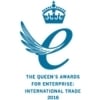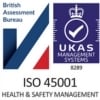If you plan to use the services of a high pressure die casting company, it helps to understand a little bit about their world. Learning some of the terminology they use, in particular, might be more important than you think.
During the design and production of your die cast part, getting to grips with the relevant parlance will empower you to engage in technical discussions and actively participate in the manufacturing process. As a result, you’ll be in the position to enhance collaboration, reduce the likelihood of errors, and ultimately create the part you really need.
So, let’s get started…
Here 10 key terms used in the die casting sector, along with their explanations…
1. Die Casting. Let’s start with the very basics… We did say this was a ‘beginner’s guide’, after all! Die casting is a manufacturing process where molten metal is poured or injected into a metal mould cavity.. The family of die casting processes includes Gravity Die Casting (sometimes referred to as Permanent Mould), Low Pressure Die Casting (LPDC), and High Pressure Die Casting (HPDC). In this article we’re focussing on HPDC, where metal is injected into the mould under high pressure, the metal solidifies rapidly and takes the shape of the mould, resulting in a finished product with precise dimensions and a smooth surface.
2. Die. A die refers to the specialised mould tooling used in the die casting process. It consists of two halves - the fixed half , and the moving (or ejection) half.. The dies for HPDC are generally produced from hardened tool steel.
3. Mold Cavity. The mold cavity is the hollow space within the die where molten metal is injected during the die casting process. This defines the shape and dimensions of the final product.
4. Sprue. Connecting the incoming molten metal from the shot sleeve to the runner system, the sprue is a channel through which molten metal is introduced into the mould cavity.
5. Runner System. Comprised of a network of channels, the runner system delivers molten metal from the sprue to different areas of the cast component or to multiple cavities within the die, ensuring uniform filling and distribution.
6. Ejection. Ejector pins are mechanical devices incorporated into the moving half of the die, ready to push the finished casting out of the die cavity once it solidifies and the die has opened.
7. Flash. Flash refers to thin excess metal material that escapes between the mating surfaces of the die during the die casting process. It is typically seen along the parting line, or other areas where the die halves meet. Flash will always need to be trimmed or removed after the casting solidifies.
8. Shot Sleeve. The shot sleeve is a cylindrical chamber that holds the molten metal before it is injected into the mold cavity.
9. Casting Defects. These are imperfections or flaws that can occur during the die casting process. Common casting defects include porosity (air pockets within the casting), shrinkage (voids due to uneven cooling), and surface blemishes. Your die casting partner will aim to avoid this by using the best method to suit your project.
10. Die Casting Cell. HPDC is an automated mechanical process. The die is mounted on the platens of a hydraulically operated machine which clamps the two halves of the die together with sufficient force to withstand the injection pressure. Modern HPDC cells include not just the die casting machine itself, with it’s clamping and injection systems, but also a furnace for melting the alloy, an automated ladle for transferring molten alloy from the furnace to the shot sleeve, a spray unit for applying lubrication between shots, and an extraction system for removing castings from the mould.Of course, there’s far more to die casting than just this list.
Understanding these terms can help you to effectively communicate and understand the die casting process – leading to a smoother production process. However, it’s important to remember that the right manufacturing partner will always be ready to explain all of their methods to you; so, there’s no need to panic about becoming an overnight expert before you approach them.
If you’re considering a die cast part for your next project, MRT Castings are ready to assist.
Since our inception over 75 years ago, we’ve specialised in the manufacture of high-quality aluminium castings. We pride ourselves on our customer relationships, so don’t worry about cutting through thick jargon in order to produce the components you need; we’re here to make it easy, from design to manufacture.
Do you need prototypes before committing to production tooling? We can help.
Have a question?
Contact our experts








